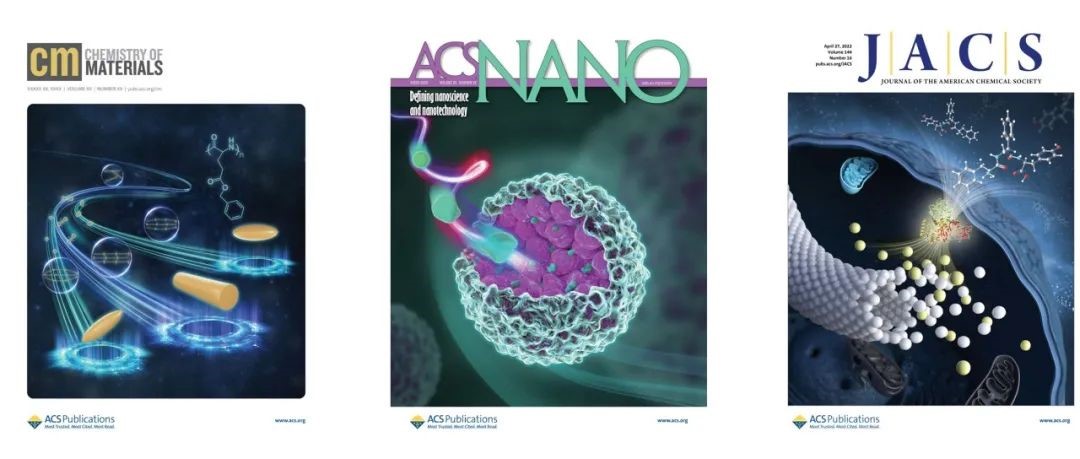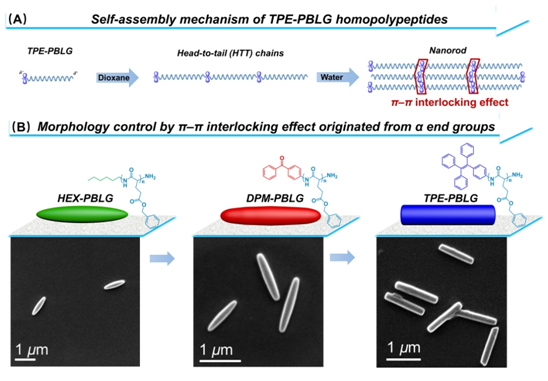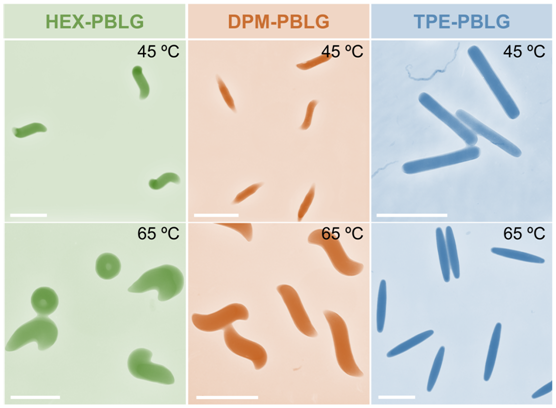Research goes on even when COVID-19 interrupts our work and life in some way. Since March 9 when the University started its dynamic control of the pandemic prevention, Professor DU Jianzhong's team of the School of Materials Science and Engineering (SMSE) of Tongji University has changed their way of doing research in due course and continued their research work through regular "cloud meetings" and customized supervision.
On May 25, a paper entitled "π–π Interlocking Effect for Designing Biodegradable Nanorods with Controlled Lateral Surface Curvature" by DU Jianzhong/ZHU Yunqing/FAN Zhen’s research team from SMSE was published as the cover paper in Chemistry of Materials, a leading journal by the American Chemical Society. Recently, the team has made a series of important research achievements in morphology regulation, mechanism analysis and new tumor therapy of peptide self-assembly. This is the third time that the team's important research results were published in journals by the American Chemical Society since April 1 this year.

Papers published in three journals by the American Chemical Society
In daily life, people use "rods" sharp at both ends when knitting sweaters, and "rods" blunt at both ends when setting up flags. Similarly, in the micro world, the structure and properties of nano materials are closely related. Although there are many examples of "grinding an iron rod into a needle" in life, how to "grind an iron rod into a needle and vice versa" is an interesting but long-standing issue in the scale of nano. To solve this problem, DU Jianzhong/ZHU Yunqing/FAN Zhen’s research team proposed a π - π Interlocking Effect that may effectively regulate the interaction between molecular chains, and realize "grinding iron rods into needles and vice versa" at the nano scale, thus providing a new approach for the construction of biodegradable nanorods with different structures and functions.
The basic principle of the π - π Interlocking Effect is shown in Figure 1A below where the polypeptide PBLG forms a stable HTT (head to tail) structure connected from head to tail, and then induces it to aggregate in a reversed parallel stacking manner, while the interaction between HTT chains is regulated by the end groups of PBLG molecules. For example, the π - π interaction between the tetrastyrene α- terminals is like an "intramolecular lock", which can firmly lock the rigidity of the HTT chain in the assembly process, and make it difficult to bend, thus forming a nano "rod" with a straight outer side. The team referred to this π – π interaction between HTT chains as the π – π Interlocking Effect. Theoretically, according to this effect, the π - π interaction between HTT chains can be regulated by designing different terminals to realize the effect of "grinding an iron rod into a needle and a needle into an iron rod".

Figure 1. (A) diagram of nanorod self-assembly mechanism;
(B) Changing nanorods from "a needle" to "a rod" via the π - π Interlocking Effect
To verify this effect, the team designed PBLG with three different α-terminals for the π - π interlocking effect at different levels, and studied the morphology of the assembly. The results showed that as the number of benzene rings at the α- terminals increases, the π - π interlocking effect grows correspondingly, and the structure of the nanorods also experiences a gradual change from " a needle" to "a rod " (Fig. 1B). In addition, in order to further verify the universality of the π – π Interlock Effect, the team also studied the self-assembly rules of PBLG molecules with the different α-terminals at different self-assembly temperatures (TSA) (Fig. 2).

Figure 2. Shapes of rods formed by PBLG with different α-terminals at different assembly temperatures
The results in Fig. 2 above showed that the π - π Interlock Effect between HTT chains can be controlled by PBLG terminals and the self-assembly temperature, and as a result, the structure of nanorods can be controlled. The π - π Interlock Effect is expected to be extended to other fields.
JIANG Jinhui, a PhD student of Class 2020 from the Department of Polymer Materials of the School of Materials Science and Engineering, Tongji University (a postdoctoral research fellow at the Chinese University of Hong Kong (Shenzhen)) and SUN Hui, a PhD student of Class 2019 (an associate professor of Ningxia University), are the authors of the paper, and Professor DU Jianzhong, Dr. ZHU Yunqing and Dr. FAN Zhen corresponding authors. The research was supported by the National Science Fund for Distinguished Young Scholars.
Link to paper:https://doi.org/10.1021/acs.chemmater.2c00116
Link to social media:https://mp.weixin.qq.com/s/PjMyIfdmLiHsxCgRs3i_xg